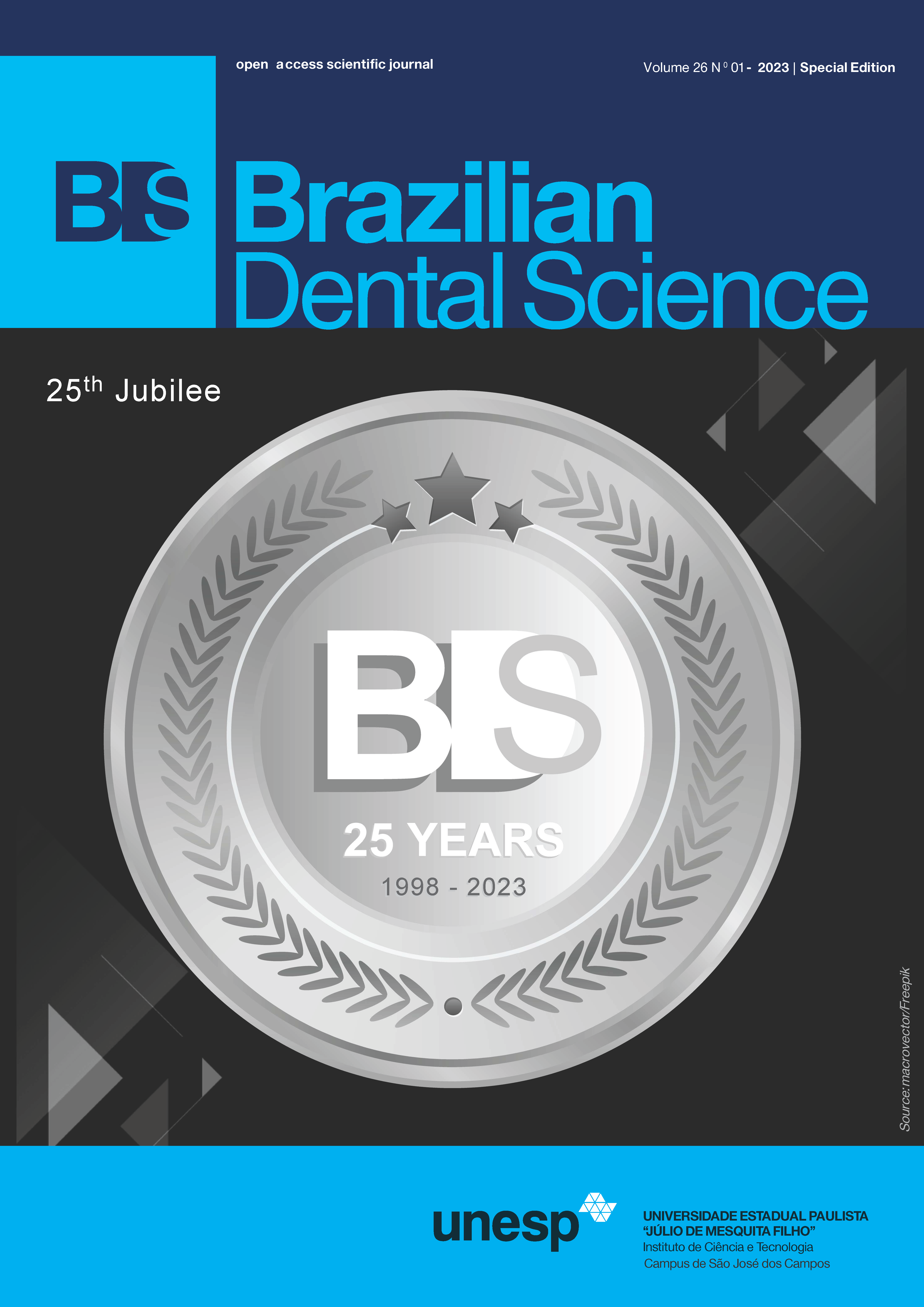Impact of photoinitiator quality on chemical-mechanical properties of dental adhesives under different light intensities
DOI:
https://doi.org/10.4322/bds.2023.e3704Abstract
Objective: Evaluate the mechanical properties of experimental adhesive models with different photoinitiators
(PI) polymerized by LED units of different power densities. Material and Methods: Three groups of adhesive
models based on HEMA/BisGMA (45/55) were prepared in association with different PI combinations: G2
(control) – 2 PI: 0.5% CQ, 0.5% EDMAB; G3 - 3 PI: 0.5% CQ; 0.5% DMAEMA, 0.5% DPIHP; G4 - 4 PI: 0.5%
CQ; 0.5% EDMAB; 0.5% DMAEMA; 0.5% DPIHP. The three formulations were polymerized at two different
LED power densities: 550 mW/cm2 and 1200 mW/cm2. The degree of conversion (DC) of adhesive monomers
was monitored in situ through the FTIR for 600 s. Specimens were prepared for each formulation for analysis of
flexural strength (FS), modulus of elasticity (ME), sorption (SOR) and solubility (SOL). Data were submitted to
two-way ANOVA and Tukey tests (5%). Results: DC: there is a significant difference among adhesive systems
(G2<G3<G4). FS and ME: significant differences were found between densities, with the lowest average for
550 mW/cm2. SOR and SOL: adhesives polymerized at 1200 mW/cm2 presented higher sorption and solubility.
Conclusion: The mechanical properties of the adhesive models are directly related to the types of photoinitiatiors
and the LED power densities.
KEYWORDS
Dental adhesive; Irradiance; Light-curing; Photoinitiators; Physicochemical phenomena.
Downloads
Published
Versions
- 2023-01-06 (2)
- 2023-01-01 (1)
How to Cite
Issue
Section
License
Brazilian Dental Science uses the Creative Commons (CC-BY 4.0) license, thus preserving the integrity of articles in an open access environment. The journal allows the author to retain publishing rights without restrictions.
=================





























